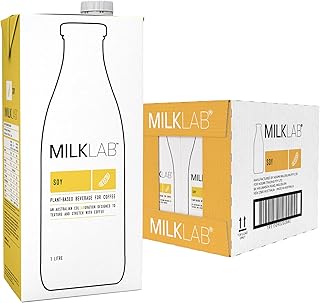When considering a high-protein diet, dairy-free milk options have become increasingly popular. The nutritional equivalence of fortified soy milk to cow’s milk, as recognized by the US Dietary Guidelines for Americans, highlights the significance of non-dairy alternatives. With lactose intolerance affecting a considerable portion of the population, the emergence of high-protein plant-based milks offers a valuable alternative.
While cow’s milk has traditionally been lauded for its protein content, the evolving landscape of dairy-free alternatives challenges this notion. The protein content of milk, whether skim, 2%, or whole, typically hovers around eight grams per serving. However, certain fortified versions can boost this protein level, such as some Fairlife products that offer up to 13 grams per serving. Despite potential variations in protein content, the ethical considerations surrounding animal cruelty in dairy production urge consumers to explore alternative sources of protein.
Plant-based milks have diversified the market, offering a wide array of options beyond traditional dairy. From oat and almond to soy and pea, these milk alternatives cater to varying nutritional needs. While cow’s milk remains a benchmark for protein content, plant-based milks offer a range of protein levels. For example, rice, coconut, and almond milk typically provide one to two grams of protein, while pea and soy milk can deliver up to eight to 10 grams per serving.
Among the top high-protein dairy-free milks, soy milk stands out for its complete plant-based protein profile, offering eight grams per serving. Despite the shift in consumer preferences towards oat and almond milk, soy milk remains a nutritional powerhouse. Pea milk, introduced by brands like Ripple, is another protein-rich option, providing eight grams of protein per serving and versatility in culinary applications.
Oat milk, a trendy choice in the non-dairy milk category, may lack in protein compared to soy or pea milk, offering three to four grams per serving. However, fortified options like Califia Farm’s Original Protein Oat Milk enhance the protein content to eight grams per serving, making it a viable choice for those seeking a protein boost without compromising on taste.
Almond milk, known for its lower protein content, can be fortified to match the protein levels of cow’s milk, providing eight grams per serving. Brands like Silk offer fortified almond milk in various flavors, making it a versatile ingredient for both beverages and recipes. Additionally, flax milk, enriched with pea protein, offers a balance of protein and healthy omega-3s, catering to consumers looking for a nutritious dairy-free alternative.
The evolving landscape of dairy-free milk options reflects a shift towards plant-based nutrition and sustainability. With an emphasis on protein-rich alternatives, consumers have a plethora of choices to meet their dietary preferences and health goals. As the demand for high-protein plant milk continues to rise, the market is likely to witness further innovation and diversification in the realm of dairy-free beverages.
📰 Related Articles
- Top 10 Clean Dairy-Free Milk Alternatives for Health-Conscious Consumers
- How Chia Milk by Benexia is Revolutionizing Sustainable Plant-Based Alternatives
- Dairy Milk Sales Surge, Plant-Based Alternatives Decline
- Soy Milk: A Nutritious Dairy-Free Alternative with Health Benefits
- Indulge in Rich Dairy-Free Ice Cream: Delicious Homemade Options






